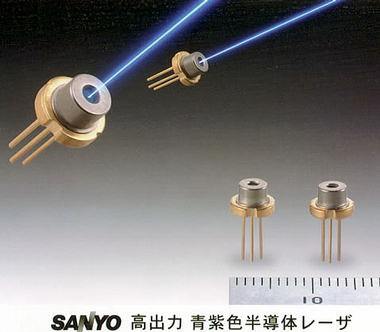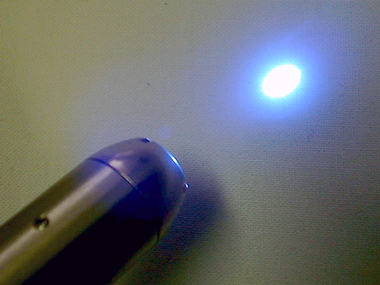SRAM market is still brisk!
NEC Mitsubishi releases new MultiSync LCD1980S monitor
PCI-X 2.0 qualification tests to start in August
Sanyo Electric develops new blue-violet laser for dual-layer Blue-ray discs
SRAM market is still brisk!
According to iSuppli, despite Micron left SRAM market it´s early to forecast market’s decease, as it might even grow slightly due to increased demand for PSRAM used in mobile phones. Anyway analysts believe SRAM players to consolidate.
So, next week Hitachi Ltd. and Mitsubishi Electric Corp. will merge SRAM production into Renesas Technology Corp., which will be offering memory chips of both parents. iSuppli experts believe Hitachi and Mitsubishi won’t be the only to merge.
Unlike the DRAM market, SRAM market includes some smaller players; Samsung Electronics and Cypress Semiconductor are considered main forces with 31.5% and 11.6% respectiev shares. Remaining part is shared between 20 companies, including IBM, Toshiba, Sony, Hynix, Motorola, Sharp, Sanyo, Seiko, Fujitsu and STMicroelectronics.
So what will provide vitality to the SRAM market? At least high-end servers (L3 cache), new synchronous SRAM, QDR, QDR-II, SigmaRAM, etc. for routers and switches.
Source: e-inSITE
NEC Mitsubishi releases new MultiSync LCD1980S monitor
NEC-Mitsubishi Electronics Display (NEC-Mitsubishi Electronics Display of America) released new 19" professional monitor — NEC MultiSync LCD1980SX – to be levelled with 18" NEC MultiSync LCD1880SX and 20" NEC MultiSync LCD2080UX. For the novelty the company plans aggressive pricing about $1000 in retail.
NEC MultiSync LCD1980SX features 380x300mm viewable area with 1280x1024 native resolution. XtraView provides up to 170° horizontal and vertical viewing angles. Max. brightness is 250cd/m˛, contrast — 700:1, response time – 25ms, line scan – 31-82kHz, frame scan – 50-85Hz.
The display features analog and DVI-D connectors. Energy consumption is 36W standard and ~0.9W standby. Dimensions are 412.2x337x80mm.
Being produced in white and black bodies, NEC MultiSync LCD1980SX will be shipping in March.
PCI-X 2.0 qualification tests to start in August
PCI-SIG (Special Interest Group for PCI-X, PCI Conventional and PCI Express), interface standard developer and promoter, informed that PCI-X 2.0 qualification tests are scheduled to Fall 2003, PCI-SIG Compliance Workshop starting these in August 2003.
As you know, PCI-X 2.0 specifications were officially announced in July 2002. PCI-X 2.0 defines two new standard versions: PCI-X 266 and PCI-X 533, provides up to 533 million op/s performance (PCI-X 1.0 defined PCI-X 66 and PCI-X 133 with up to 133 million op/s performance or up to 1Gb/s throughput for 64-bit bus), utilizes DDR and QDR signalling to increase PCI throughput to 2.1Gb/s and 4.3Gb/s, respectively. Special versions of PCI-X 2.0 utilize ECC algorithms. Such throughput will be suitable for Gigabit Ethernet, 10Gbit Fibre Channel, Ultra640 SCSI, Serial Attached SCSI, Serial ATA, 4X Infiniband, RAID and cluster buses.
PCI-X 2.0 has been developed by AMD, Compaq, Fujitsu Siemens, Hewlett-Packard, IBM, Intel and ServerWorks.
Sanyo Electric develops new blue-violet laser for dual-layer Blue-ray discs
Sanyo Electric announced the development of semiconductor blue-violet laser with improved radiation power for Blue-ray recorders. The power input of new 405nm laser reaches 100mW in impulse making it suitable for new dual-layer disc recording. Power input of similar previous-generation lasers hasn’t exceeded 50mW.

As you know, the current single-layer Blue-ray discs have 27Gb capacity, new lasers doubling this volume. The novelty utilize gallium nitride (GaN) composite material. Such a high radiation power was achieved due to a special current stabilizer along with high-quality optics. Laser main specs:
- Continuous optical power: 50mW
- Pulse optical power: 100mW
- Threshold current: 40mA
- Nominal current (at 50mW optical power): 100mA
- Wavelength: 405nm
- Beam angle: 8° horizontal / 23° vertical

Sampling will start in July, volume being scheduled to early October 2003.
Write a comment below. No registration needed!


